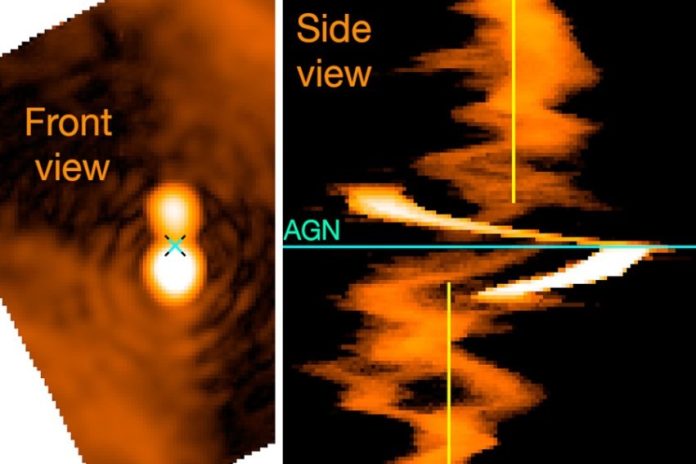
Researchers at the University of Minnesota have created a groundbreaking technique that transforms 2D radio images into 3D models, offering a deeper understanding of the Universe.
This new approach, called “Pseudo3D cubes,” is a first-of-its-kind method for reconstructing radio images into three-dimensional structures.
The findings were recently published in the Monthly Notices of the Royal Astronomical Society.
Radio images are visual representations of radio waves, but traditionally, these images are captured in 2D, which can make it difficult to fully understand what an object looks like in 3D.
By converting these flat images into 3D models, scientists can better study phenomena such as galaxies, black holes, and jets of particles moving at high speeds through space.
This technique also sheds new light on how the Universe works.
To achieve this, the team studied polarized radio light—light that vibrates in a specific direction. If you’ve ever noticed the glare on a highway and used polarized sunglasses to block it, you’ve encountered polarized light in action.
In this study, researchers used a phenomenon called Faraday rotation, where the direction of polarized waves shifts depending on the amount of material the waves pass through. By measuring this rotation, they calculated how far each part of the radio image traveled, effectively creating a 3D model.
“This approach showed us that the shapes of these objects are very different in 3D compared to the 2D images we’ve been relying on,” said Professor Emeritus Lawrence Rudnick, one of the lead researchers. The 3D models revealed details about the movement of material around black holes, the effects of cosmic winds, and the structure of magnetic fields in space.
The new method could lead to surprising discoveries as scientists revisit old images and apply this technique to data from advanced telescopes like MeerKAT in South Africa. The researchers believe this will change how we understand the Universe.
“This has already changed how we think about these exotic objects,” Rudnick added. “We expect plenty of surprises as we continue using this method.”
The study involved scientists from institutions around the world, including the Australian National University, Stanford University, and the University of Manchester.
The research team hopes this innovative approach will become a standard tool for analyzing space phenomena in the future.



